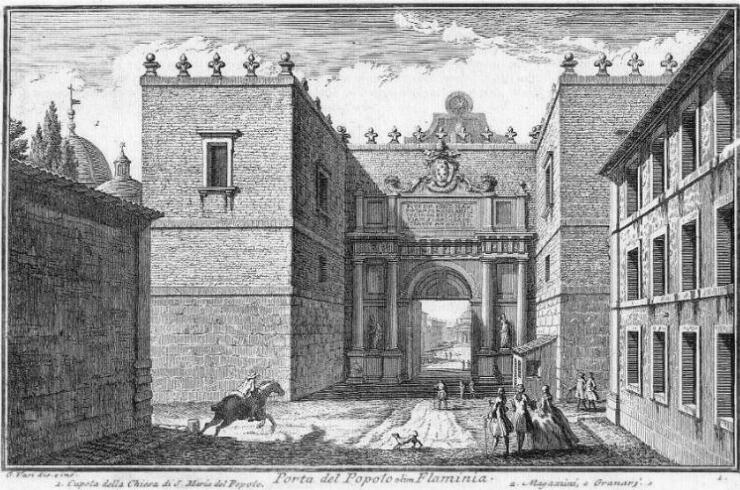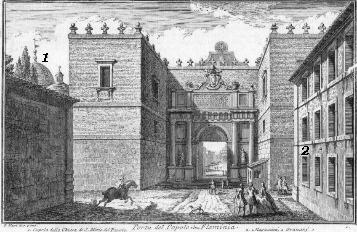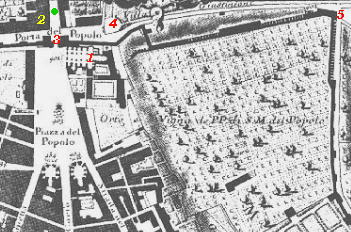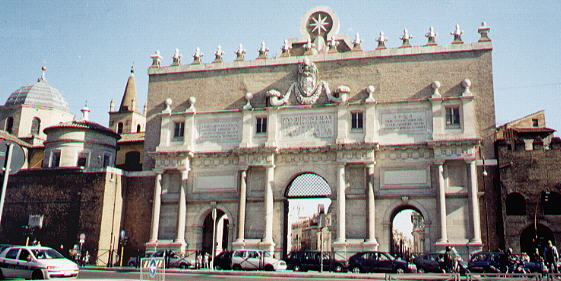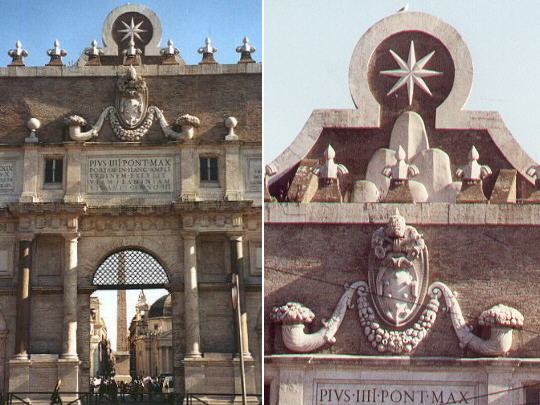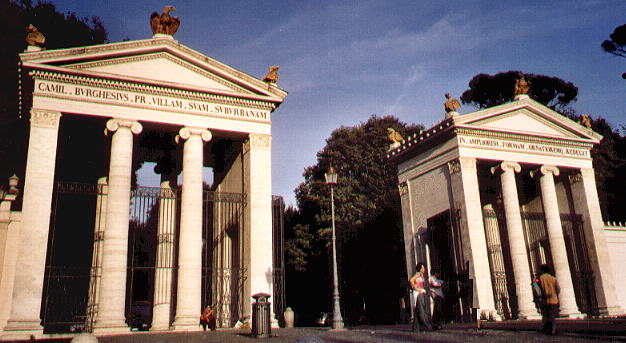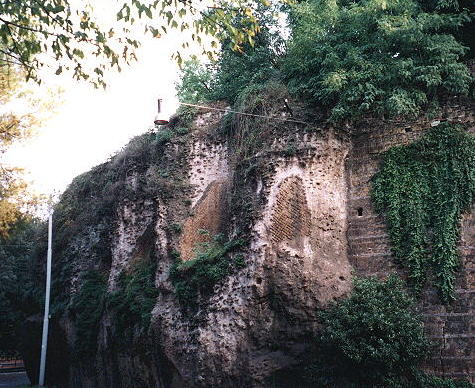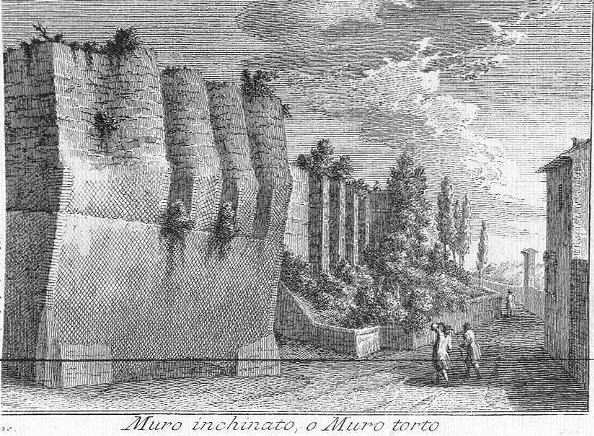  Porta del Popolo (Book 1) (Map B1) (Day 1) and (Day 2) (View C6) (Rione Campo Marzio) In this page:
Porta del Popolo has been the main entrance to Rome for centuries.
It is also called Porta Flaminia because it is the starting point (in the
walls built by Aurelianus) of Via Flaminia leading to Ponte
Milvio after which it splits into Via Flaminia (going to Rimini) and
into Via Cassia (going to Florence). Porta del Popolo was the starting point in the tourist guides of the XIXth century. The view is taken from the green dot in the small 1748 map here below.
In the description below the plate Vasi made reference to: 1) Dome of S. Maria del Popolo;
2) Warehouses and granaries. 1) is shown in another page. The small map shows also: 3) Porta del Popolo;
4) Entrance to Villa Borghese.
The towers protecting the gate were pulled down after 1870 to expand the gate by adding two minor arches. The granaries and warehouses do not exist any longer. The little dome below the main dome of S. Maria del Popolo belongs to the Chigi chapel, designed by Raphael and completed by Gian Lorenzo Bernini.
The monumental gate erected by Vignola in 1561 bears the coat of arms of Pius IV. It is said that Vignola worked on an original design by Michelangelo. The six mountains and the star above the coat of arms are part of the decoration of the inner gate designed by Gian Lorenzo Bernini in 1655 to celebrate the arrival of Queen Christina of Sweden. Behind the gate one of the most spectacular views of Rome, Piazza del Popolo.
Prince Camillo Borghese, husband of Paolina Buonaparte, rearranged in 1830 the park around Villa Borghese and had the architect and archaelogist Luigi Canina build for him a new entrance to the Villa from Porta del Popolo. The Ionian propyla are surmounted by the Borghese eagles and dragons. In the XVIIIth century this area belonged to the Giustiniani family. The Walls between Porta del Popolo and Porta Pinciana
The walls between Porta del Popolo and Porta Pinciana are called
Muro Torto (bent wall) or Murus Ruptus, because at one point they
seem to collapse. This stretch was never fortified or rebuilt in the belief
that St. Peter himself would protect the city at that point. Vasi showed in the small etching here below this part of the walls
Excerpts from Giuseppe Vasi 1761 Itinerary related to this page:
Next plate in Book 1: Porta Pinciana
Go
to |
All images © 1999 - 2003 by Roberto Piperno. Write to romapip@quipo.it
